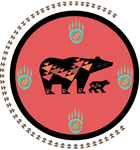Tribal PREP programs target youth, ages 10-19, who are the most high-risk for pregnancies, including (but not limited to) youth in or aging out of foster care, homeless youth, youth with HIV/AIDS, pregnant and/or parenting youth who are under 21 years of age, and youth who live in areas with high adolescent birth rates.
"Tribal PREP programs target youth, ages 10-19, who are the most high-risk or vulnerable for pregnancies. This group includes, but is not limited to, youth in or aging out of foster care, homeless youth, youth with HIV/AIDS, pregnant and/or parenting youth who are under 21 years of age, and youth who live in areas with high adolescent birth rates. In addition to educating youth about abstinence and contraceptive use, Tribal PREP projects also prepare young people for adulthood by addressing three or more of the subjects below:
Healthy relationships, including development of positive self-esteem and relationship dynamics, friendships, dating, romantic involvement, marriage and family interactions;Positive adolescent development, including promotion of healthy attitudes and values about adolescent growth and development, body image, racial and ethnic diversity, and other related subjects;financial literacy, to support the development of self-sufficiency and independent living skills;parent-child communication skills;education and employment preparation skills;and healthy life skills, such as goal-setting, decision making, negotiation, communication and interpersonal skills, and stress management."
Retrieved from https://www.acf.hhs.gov/fysb/resource/tribal-prep-fact-sheet

